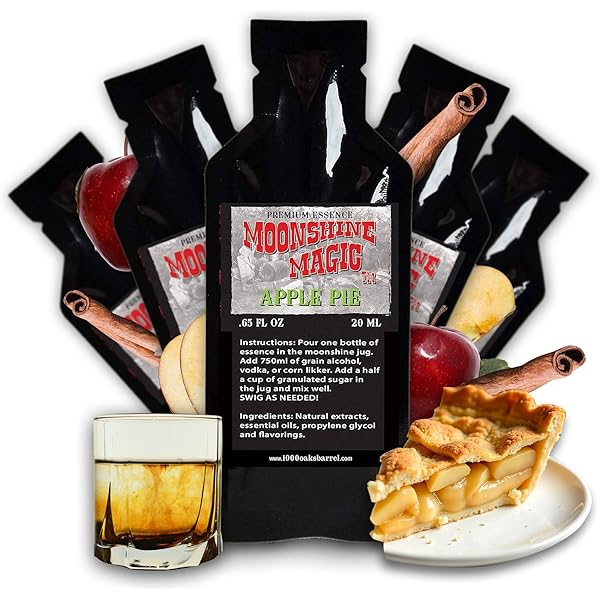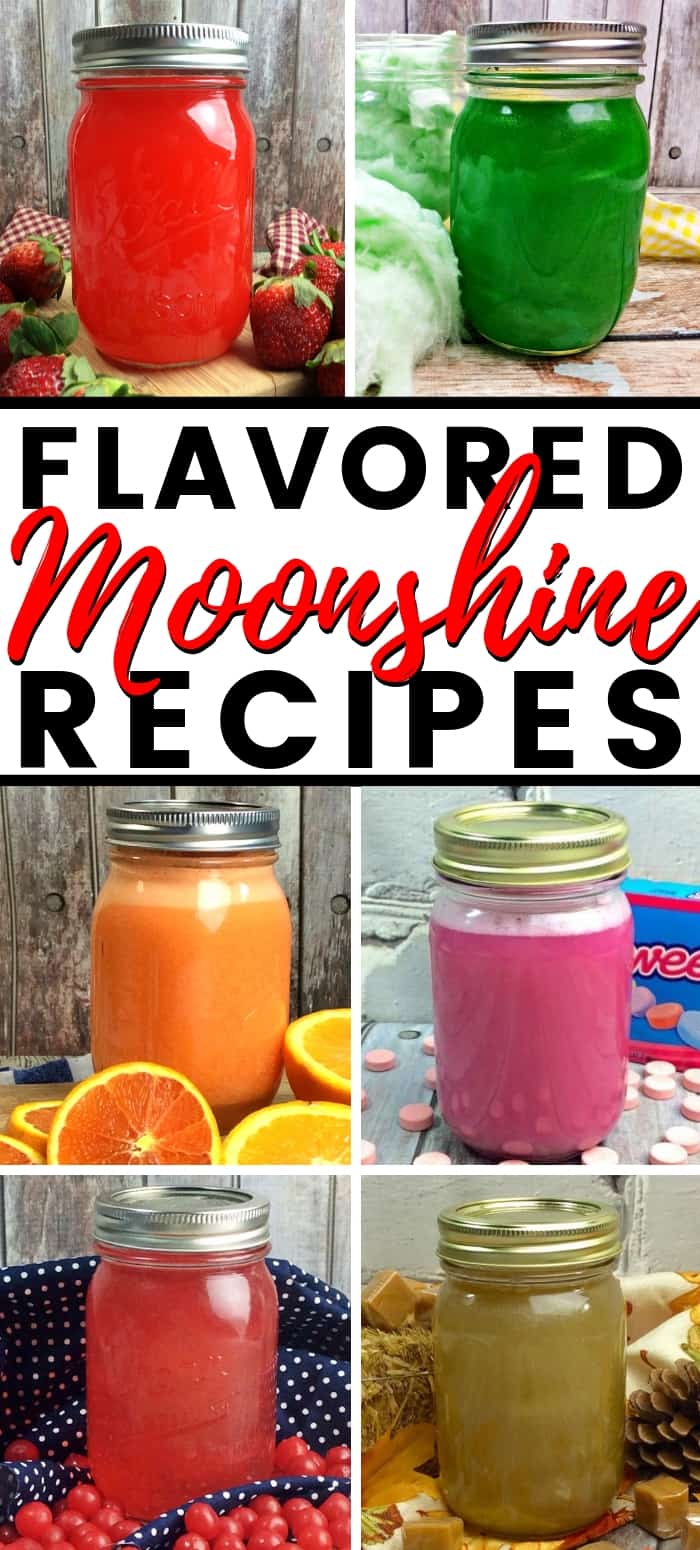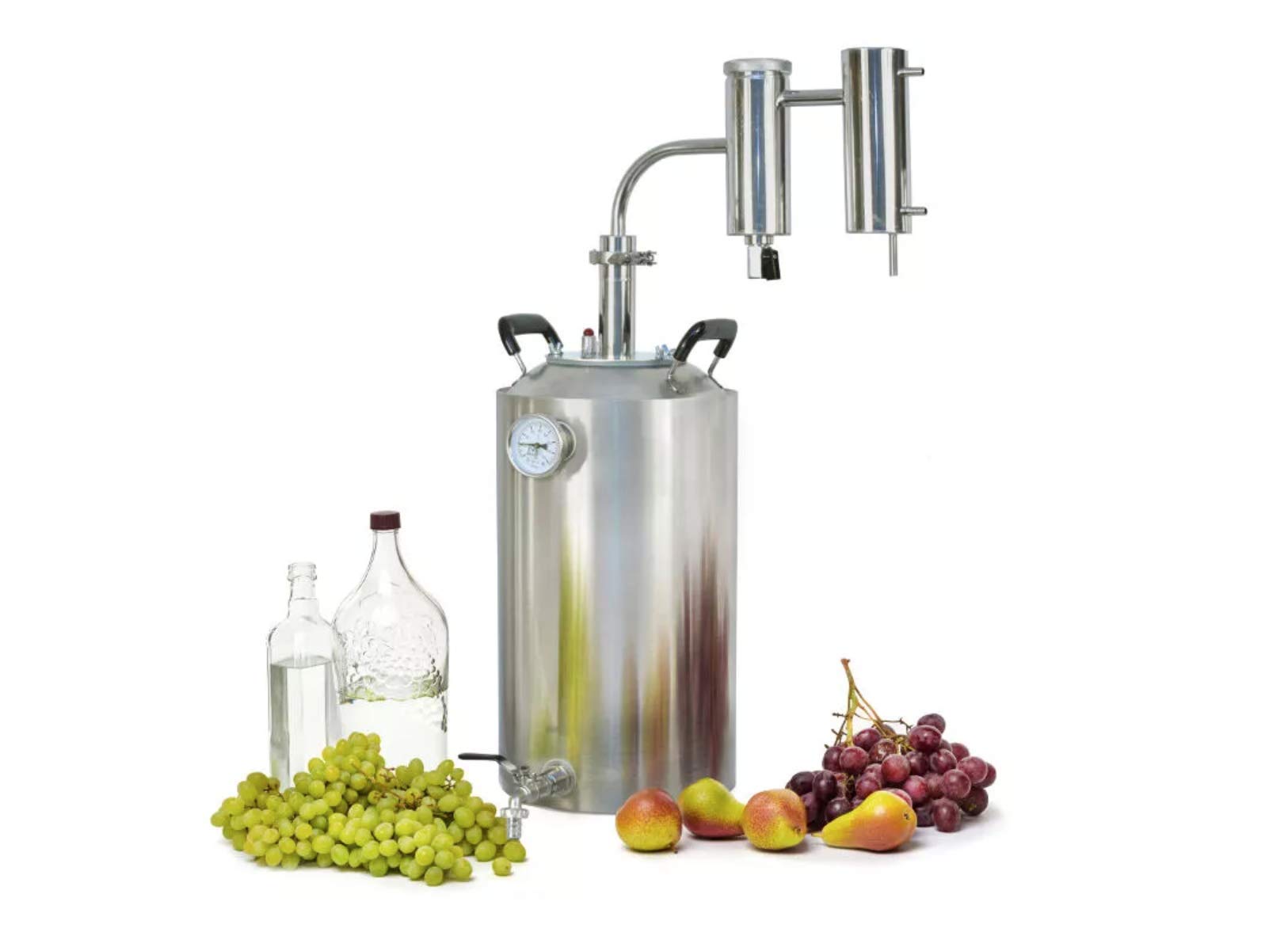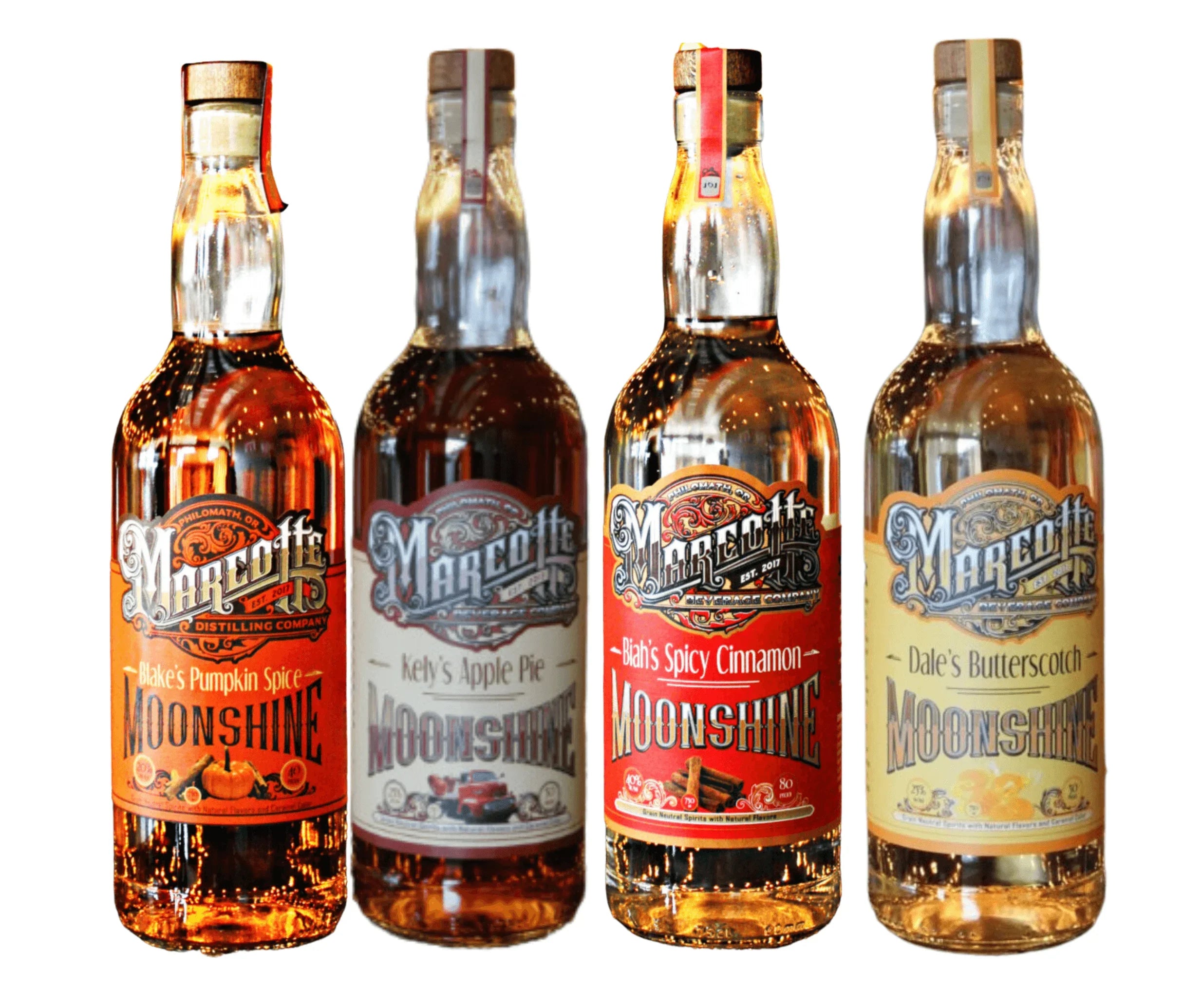Spices for Infused Moonshine: Step-by-Step Guide to Delicious Flavors

Key Takeaways
- The right combination of spices can transform plain moonshine into complex, flavorful spirits worthy of any craft distillery
- Cinnamon, vanilla beans, and star anise are among the top spices that work exceptionally well in moonshine infusions
- Proper preparation of spices, including toasting and crushing, releases more flavor compounds during the infusion process
- The infusion time varies dramatically depending on the spice—from just 24 hours for intense spices like cloves to several weeks for subtle flavors
- Moonshine Republic provides expert guidance and premium ingredients for home distillers looking to craft signature spiced spirits at home
Plain moonshine is a blank canvas waiting to be transformed into something extraordinary. With the right spices and a bit of patience, you can create complex, flavorful spirits that rival commercial offerings at a fraction of the cost. Whether you’re a seasoned home distiller or just starting your moonshine journey, adding spices is the perfect way to elevate your craft.
At Moonshine Republic, we’ve helped countless home brewers discover the art of spice infusion, turning basic distillates into sippable treasures. The magic happens when quality spices meet proper technique—and that’s exactly what we’ll explore in this comprehensive guide to spicing your moonshine.
Spice infusions work because alcohol is an excellent solvent, extracting essential oils and flavor compounds from spices that water alone cannot reach. This chemical magic transforms both the flavor profile and sometimes even the color of your spirit, creating a multi-sensory experience that plain moonshine simply cannot match.
Transform Plain Moonshine into Flavor Magic

“Cherry Moonshine Essence Flavoring …” from www.amazon.com and used with no modifications.
Transforming clear, harsh moonshine into a smooth, complex spirit isn’t just about masking the alcohol—it’s about creating harmony. Think of spices as the supporting musicians that bring depth and character to your moonshine’s solo performance. Each spice adds its own note to the composition, creating layers of flavor that develop and change over time.
The process itself is deceptively simple: combine your chosen spices with moonshine, wait for the infusion to work its magic, then strain and enjoy. But the art lies in the details—which spices to use, how to prepare them, how long to infuse, and how to balance competing flavors. Get it right, and you’ll produce moonshine worthy of being shared and savored.
Before diving into specific spices, understand that quality matters tremendously. Dusty, years-old spices from the back of your pantry won’t produce the vibrant flavors you’re after. Invest in fresh, high-quality spices—preferably whole rather than pre-ground—to achieve the best results in your moonshine creations.
10 Essential Spices That Elevate Your Moonshine

“Flavoring Moonshine: Ignite Your Senses …” from homebrewacademy.com and used with no modifications.
While the world of spices is vast, certain varieties have proven themselves particularly well-suited for moonshine infusions. These ten spices form the foundation of countless successful recipes, each bringing its own character to your spirits. Master these, and you’ll have the building blocks for nearly any flavor profile you can imagine.
1. Cinnamon Sticks: The Classic Warming Spice
Cinnamon stands as the undisputed champion of moonshine spices, bringing familiar warmth and subtle sweetness that complements the natural heat of alcohol. Unlike ground cinnamon, which can create unpleasant sludge, whole sticks release their flavor gradually while keeping your moonshine beautifully clear. Two 3-inch cinnamon sticks per quart of moonshine provides a balanced flavor within 3-5 days.
For maximum flavor extraction, lightly crack your cinnamon sticks before adding them to your moonshine. This exposes more surface area to the alcohol without creating fine particles that are difficult to filter later. Ceylon cinnamon offers a more delicate, complex flavor profile than the more common cassia variety, though both work beautifully in different applications.
- Pairs beautifully with: apple, vanilla, orange, clove
- Infusion time: 3-5 days for a balanced flavor
- Pro tip: Remove cinnamon after your desired flavor strength is reached—it will continue intensifying if left in
Cinnamon forms the backbone of classic moonshine recipes like apple pie and holiday spice blends. Its familiar flavor provides an accessible entry point for those new to spiced spirits while still offering complexity for experienced palates. Start with cinnamon in your first batches, then branch out to more exotic combinations as you gain confidence.
2. Vanilla Beans: Rich Depth and Sweetness
Nothing adds luxurious depth quite like real vanilla beans. Split lengthwise to expose the tiny seeds, one or two beans can transform a quart of moonshine into a sophisticated sipper with notes of cream, marshmallow, and subtle spice. Unlike artificial vanilla extract, real beans contribute over 250 flavor compounds that develop and change during aging.
The type of vanilla bean you choose matters significantly. Madagascar beans offer classic, rich flavor; Tahitian beans bring floral notes; Mexican beans contribute spicier undertones; and Ugandan beans provide chocolate notes. For moonshine, Madagascar or Mexican varieties typically work best, standing up to the alcohol while providing complementary flavor profiles.
3. Star Anise: Licorice Notes with Visual Appeal
Star anise delivers a one-two punch in moonshine—dramatic visual impact coupled with distinctive licorice flavor that cuts through the alcohol burn. These star-shaped pods not only flavor your moonshine but also create a stunning presentation if left in the bottle. Use sparingly though—one pod per quart is sufficient, as the anise flavor can quickly dominate more subtle notes. To explore more about how different ingredients can influence your brew, check out this guide on best fruits for infused moonshine.
4. Cardamom Pods: Exotic and Aromatic
Cardamom pods bring complex citrus, mint, and spice notes that can elevate moonshine from rustic to refined. Lightly crush 5-7 green cardamom pods before adding to a quart of moonshine, allowing the seeds inside to release their intense aromatic compounds. This spice works particularly well in fruit-forward recipes, adding a sophisticated edge that balances sweetness.
For an even more exotic twist, black cardamom pods offer smokier, more robust flavor that pairs beautifully with darker fruit infusions like blackberry or plum. The versatility of cardamom makes it essential in any serious moonshine spice collection, offering endless pairing possibilities for the experimental distiller.
5. Cloves: Powerful Punch in Small Packages
Cloves pack an astonishing amount of flavor in their tiny form, delivering intense aromatic notes that can quickly dominate a moonshine infusion. Just 4-6 whole cloves per quart is sufficient—any more and you risk overwhelming other flavor elements. Their natural numbing quality can help smooth the burn of higher-proof moonshine while adding complexity.
The key to working with cloves is restraint. Their potency means they require careful monitoring during infusion, as they can quickly overpower other spices. I recommend sampling your infusion daily when using cloves, typically removing them after just 24-48 hours when they’ve contributed enough flavor without becoming overwhelming. For more insights on achieving the perfect infusion, you might find this guide on storage conditions for aged moonshine helpful.
6. Fresh Ginger: Spicy Zing That Wakes Up Your Taste Buds
Few ingredients cut through alcohol’s burn quite like fresh ginger. Sliced thinly, about 2 ounces per quart of moonshine brings a lively heat that stimulates the palate without the harshness of artificial additives. Unlike dried ginger, fresh root delivers bright, citrusy notes alongside its characteristic spice, creating a more complex flavor profile.
For maximum flavor extraction, peel your ginger before slicing—the thin skin can contribute bitter notes to your infusion. Young ginger offers milder, more aromatic qualities, while mature ginger brings stronger heat. Both work beautifully in moonshine infusions, though the intensity will vary significantly between batches.
7. Allspice Berries: One Berry, Multiple Flavor Notes
Allspice berries are nature’s flavor multitaskers, delivering notes of cinnamon, nutmeg, and clove in a single ingredient. This concentrated spice provides remarkable complexity with minimal effort, making it ideal for creating well-rounded flavor profiles without juggling numerous individual spices. Six to eight berries per quart creates balanced flavor within a week.
To maximize flavor extraction, lightly crush allspice berries just before adding them to your moonshine. This simple step releases the volatile oils locked within, accelerating the infusion process and intensifying the flavor. Allspice works particularly well in apple and berry moonshine recipes, adding warm depth that complements fruit’s natural sweetness.
8. Black Peppercorns: Surprising Heat and Complexity
Black peppercorns bring unexpected complexity to moonshine, contributing not just heat but floral, woody, and citrus notes that develop beautifully during infusion. Used sparingly—about 1 teaspoon per quart—they create a subtle warmth that builds gradually on the palate rather than overwhelming the first sip. This controlled heat complements fruit and sweet infusions surprisingly well.
9. Nutmeg: Festive Warmth for Holiday Batches
Freshly grated nutmeg transforms ordinary moonshine into a holiday-worthy spirit with its distinctive warming character. Unlike pre-ground nutmeg, which quickly loses potency, whole nutmeg grated directly into your infusion delivers vibrant aroma and complex flavor. Just half a nutmeg, freshly grated, provides ample flavor for a quart of moonshine.
The magic of nutmeg lies in its ability to enhance sweetness without adding sugar, making it perfect for creating dessert-like moonshine flavors with less added sweetener. Its natural oils bind beautifully with alcohol, creating a silky mouthfeel that smooths out moonshine’s characteristic edge. Paired with vanilla and cinnamon, nutmeg creates the foundation for countless seasonal specialties.
10. Dried Citrus Peels: Bright Accent Notes
Dried citrus peels—orange, lemon, or lime—add bright, zesty notes that cut through moonshine’s intensity while contributing natural essential oils. The colored zest (not the bitter white pith) contains concentrated flavor that infuses rapidly, typically reaching optimal intensity within 2-3 days. One tablespoon of dried peel per quart provides balanced citrus character.
For best results, make your own dried peels using organic, unwaxed citrus. Simply remove the colored portion with a vegetable peeler, avoiding the bitter white pith, and allow to air-dry for 2-3 days before using. This extra step delivers significantly better flavor than commercial dried peel, which often contains preservatives that can interfere with clean flavor development.
Perfect Spice Combinations for Signature Moonshine Flavors

“11+ Amazing Flavored Moonshine Recipes” from crayonsandcravings.com and used with no modifications.
While individual spices can certainly shine on their own, the true art of flavoring moonshine comes from thoughtful combinations that create more than the sum of their parts. These tried-and-tested spice blends have proven themselves repeatedly in my distilling adventures, offering balanced flavor profiles that transform raw moonshine into sippable delights with distinct personalities. For more insights, check out this article on flavoring moonshine.
Apple Pie Moonshine Spice Blend
The undisputed champion of flavored moonshine, apple pie combines warming spices with fruit sweetness for an irresistibly nostalgic sipper. For each quart of moonshine, combine 3 cinnamon sticks (lightly cracked), 1 whole nutmeg (cracked into pieces), 6 whole cloves, and 2 star anise pods. Add 2 tablespoons dried orange peel for brightness that cuts through the sweetness of apple juice or cider that you’ll mix in later.
The key to authentic apple pie moonshine is patience—allow this spice blend to infuse for a full week before adding your sweetened apple component. This approach prevents the fruit from fermenting while giving the spices time to fully integrate with the alcohol. For more inspiration, explore these moonshine recipes. The result is a smooth, warming spirit that captures the essence of freshly baked pie in liquid form.
Holiday Spice Moonshine Mix
When the weather turns cold, this festive spice blend transforms moonshine into the perfect fireside companion. Combine 2 cinnamon sticks, 6 allspice berries, 3 cloves, half a vanilla bean (split lengthwise), a quarter of a nutmeg (cracked), and 4 cardamom pods (lightly crushed) per quart of moonshine. Allow to infuse for 5-7 days, tasting regularly until the desired intensity is reached.
Summer Citrus Spice Infusion
For warmer months, this bright, refreshing blend wakes up the palate with citrus and gentle spice. For each quart of moonshine, combine 1 tablespoon dried lemon peel, 1 tablespoon dried orange peel, 1 inch of fresh ginger (sliced thin), 3 cardamom pods (lightly crushed), and a small cinnamon stick. The result is a vibrant spirit that works beautifully in summer cocktails or simply over ice.
The Step-by-Step Infusion Process

“How to make Moonshine: DIY, Making …” from www.northstills.com and used with no modifications.
Creating perfectly spiced moonshine isn’t just about ingredients—it’s about technique. The method you choose dramatically affects the flavor extraction, intensity, and overall balance of your final product. Whether you’re a methodical planner or an impatient experimenter, understanding these fundamental processes will help you achieve consistent, delicious results with every batch.
Equipment You’ll Need
Successful spice infusions start with the right tools. At minimum, you’ll need wide-mouth mason jars with tight-fitting lids for infusing, fine mesh strainers for filtering, unbleached coffee filters for final clarification, and clean bottles for storing your finished product. A digital kitchen scale helps measure spices consistently, while small sampling pipettes allow you to test your infusion without disturbing the entire batch. If you’re interested in exploring more, check out the best fruits for infused moonshine to complement your spice choices.
For those serious about their moonshine crafting, consider investing in a small barrel (1-2 liters) for aging spiced creations. The porous wood accelerates flavor development while adding subtle vanilla and caramel notes from the charred interior. These micro-barrels can transform a good spiced moonshine into an extraordinary one in just a few weeks, compared to months or years in full-sized barrels. For more insights, learn about how moonshine potency changes with age.
Preparing Your Spices Properly
Proper spice preparation makes the difference between mediocre and magnificent infusions. Whole spices generally require some form of breaking or crushing to expose their interior surfaces to the alcohol. Cinnamon sticks should be lightly cracked (not pulverized), nutmeg should be coarsely grated or broken into pieces, and peppercorns and cardamom should be lightly crushed. This increases surface area without creating fine powder that’s difficult to filter later. For more tips on achieving the perfect infusion, check out these storage conditions for aged moonshine.
For many spices, toasting before infusion dramatically improves flavor extraction. Dry-toast whole spices in a skillet over medium heat just until fragrant—about 1-2 minutes with constant movement to prevent burning. This simple step activates volatile oils and creates more complex flavor compounds through the Maillard reaction. Allow toasted spices to cool completely before adding to your moonshine.
The Cold Infusion Method
Cold infusion is the most common and foolproof approach to spicing moonshine. Simply add prepared spices to your spirit in a sealed container, store in a cool, dark place, and shake gently daily. The alcohol slowly extracts flavor compounds over days or weeks, resulting in clean, well-defined flavors with minimal bitter notes. This patient method works particularly well for delicate spices and is ideal for beginners since it’s nearly impossible to over-extract unwanted flavors.
The Hot Infusion Technique
When time is of the essence, hot infusion offers a significant acceleration of the flavoring process. This approach involves heating (not boiling) your moonshine with spices to rapidly extract flavors—reducing infusion time from weeks to hours. Add your prepared spices to moonshine in a non-reactive pot, warm gently to about 150°F (well below alcohol’s boiling point), and maintain this temperature for 30-60 minutes before cooling completely and straining. While convenient, this method requires careful temperature control to prevent alcohol evaporation and can sometimes extract bitter compounds.
Timing: How Long to Infuse for Perfect Flavor
The ideal infusion time varies dramatically depending on your chosen spices and desired intensity. Potent spices like cloves, cinnamon, and star anise may require just 24-72 hours, while subtler ingredients like vanilla beans might need weeks to fully express themselves. Rather than following rigid timelines, develop the habit of daily tasting—simply draw a small sample with a clean pipette or straw, noting how the flavor evolves.
Remember that spices continue working until physically removed from your moonshine. There’s no automatic stopping point where flavors reach equilibrium and stabilize. This means vigilance is essential—once your infusion approaches your target flavor profile, strain out the spices promptly to prevent over-extraction of bitter or unbalanced notes.
Different spices extract at different rates, which creates a challenge when using spice blends. You have two options: add all spices simultaneously and remove the entire blend when the fastest-extracting spice reaches optimal flavor (accepting that slower spices may not fully express), or stagger your additions, starting with slow-extracting spices and adding quicker ones later in the process. For those interested in experimenting with flavors, you might also explore the best fruits for infused moonshine to complement your spice blends.
- Fast-extracting spices (24-72 hours): cloves, star anise, hot peppers
- Medium-extracting spices (3-7 days): cinnamon, citrus peel, ginger, cardamom
- Slow-extracting spices (1-3 weeks): vanilla beans, whole nutmeg, allspice
The temperature of your storage location significantly impacts infusion speed. A batch kept at room temperature might be ready in a week, while the same recipe stored in a cool cellar could take two weeks or more. This isn’t necessarily bad—slower infusions often develop more nuanced flavors—but it’s something to account for in your timing expectations.
Boosting Flavors: Companion Ingredients That Work With Spices

“52,833 Boost Stock Photos – Free …” from www.dreamstime.com and used with no modifications.
While spices form the backbone of flavored moonshine, companion ingredients can elevate your creation from good to exceptional. These supporting players enhance, complement, and sometimes transform how spices express themselves in your final product. Understanding these synergistic relationships allows you to create truly distinctive moonshine expressions.
Fresh and Dried Fruits
Fruits and spices have a natural affinity, each bringing out the best in the other. Fresh fruits contribute bright, vibrant notes and natural sweetness, while dried fruits offer concentrated flavor and subtle caramel undertones. When pairing fruits with spices, consider both flavor complementarity and intensity balance—robust spices like cinnamon and star anise stand up beautifully to bold fruits like apples and pears, while delicate spices like cardamom shine alongside subtler fruits like white peaches or berries. For those interested in the aging process of infused moonshine, you might wonder, does moonshine age well?
The preparation method matters significantly when adding fruits to spiced moonshine. For fresh fruits, removing seeds and pits prevents bitter notes from developing during infusion. Lightly muddling or slicing increases surface area without creating a pulpy mess that’s difficult to filter later. For dried fruits, a quick rinse removes surface dust and debris, while rough chopping exposes more interior surface to your moonshine.
Some particularly magical fruit and spice combinations include cinnamon with apple, vanilla with peach, cardamom with pear, star anise with plum, and ginger with pineapple. These pairings have proven consistently successful across countless batches, creating harmonious flavor profiles greater than the sum of their parts.
Sweeteners That Complement Spice Profiles
Sweeteners do more than just counter moonshine’s natural bite—they act as flavor carriers that can dramatically influence how spices express themselves. Different sweeteners bring distinct characteristics that can enhance specific spice notes: honey amplifies floral qualities in cardamom and vanilla; maple syrup deepens cinnamon and nutmeg; agave nectar brightens ginger and citrus peel; and brown sugar adds molasses complexity to allspice and clove combinations.
The key to successful sweetening lies in restraint and timing. Add sweeteners after your spice infusion is complete and strained, as sugar can interfere with proper flavor extraction from spices. Start with less than you think you need—about 2-3 tablespoons per quart for subtle sweetness, or up to ⅓ cup for dessert-style infusions. Remember that sweetness intensifies as spiced moonshine ages, so what seems perfectly balanced today might become cloying after a month.
Herbs That Pair Beautifully With Spices
Fresh herbs introduce bright, complex notes that can transform spiced moonshine from one-dimensional to extraordinary. Mint brings cooling freshness that balances warm spices like cinnamon and ginger. Rosemary contributes piney, resinous qualities that complement cardamom and black pepper. Basil adds unexpected anise-adjacent notes that pair surprisingly well with citrus peels and vanilla. Even humble thyme can contribute earthy, floral complexity alongside allspice and nutmeg.
Unlike hardy spices, fresh herbs require careful handling to prevent them from turning bitter or muddy during infusion. Limit herb infusions to 24-48 hours maximum, tasting frequently to catch them at their peak before bitter chlorophyll notes develop. Gently bruise leaves rather than chopping them to release aromatic compounds while maintaining easy removal. For longer-term storage, consider creating separate herb and spice infusions, then blending them to taste before bottling.
Filtering and Storing Your Spiced Moonshine

“How To Filter Your Moonshine Faster …” from www.youtube.com and used with no modifications.
Proper filtering and storage preserves the brilliant flavors you’ve worked so hard to create. These final steps transform your spiced creation from amateur experiment to professional-quality spirit worthy of special occasions and generous sharing.
When and How to Filter Properly
Filtering spiced moonshine is a multi-stage process that begins with removing large solids and progresses to clarifying increasingly fine particles. Start with a coarse strainer to remove whole spices and large pieces, followed by fine mesh straining to catch smaller particles. For crystal-clear results, finish with unbleached coffee filters or specialized spirit filters that remove microscopic sediment without stripping flavor. Patience is crucial—rushing filtration compacts particles and slows the process, while gentle, gravity-fed filtering preserves clarity and flavor integrity.
The timing of filtration significantly impacts your final product. Some spice particles continue releasing flavor compounds even after the main infusion period ends. If absolute clarity isn’t your priority, consider a light initial filtering that removes only the largest pieces, allowing smaller particles to continue contributing subtle flavor during storage. For finished gifts or presentation bottles, complete multi-stage filtering delivers the professional appearance most moonshiners desire.
Best Containers for Aging and Storage
Once filtered, your spiced moonshine deserves proper housing that preserves its quality. Amber glass bottles block UV light that can degrade both flavor and color over time. Swing-top bottles with rubber gaskets provide reliable seals while adding rustic charm to your creation. For longer aging, traditional mason jars with new lids ensure airtight storage that prevents flavor oxidation. Whatever container you choose, fill it completely to minimize oxygen exposure, which can flatten delicate spice notes over time.
Storage location dramatically affects how your spiced moonshine evolves. Cool, dark environments slow flavor development while maintaining balance. Warm locations accelerate aging but may cause volatile aromatics to dissipate more quickly. Refrigeration isn’t necessary but can help preserve especially delicate herb and fruit notes in complex spice blends. Consistency matters more than specific temperature—dramatic fluctuations force expansion and contraction that can degrade flavor faster than steady storage at almost any reasonable temperature.
Shelf Life and Flavor Development Over Time
Properly made spiced moonshine doesn’t “go bad” in the traditional sense, but its flavor profile changes significantly over time. Most spiced creations pass through several distinct phases: an initial integration period (1-2 weeks) where harsh edges soften; a peak flavor window (1-6 months) where balance and complexity reach their height; and a gradual mellowing phase where some brightness fades but smoothness increases. Marking bottles with creation dates helps track this evolution and identify your personal sweet spot for consumption.
Different spices age at dramatically different rates. Cinnamon and clove notes remain remarkably stable over time, while citrus brightness and fresh ginger heat fade more quickly. Vanilla and wood-derived flavors often increase in prominence as other elements recede. Understanding these patterns helps you time consumption appropriately—enjoy citrus-forward batches within a few months, while saving vanilla-dominant creations for longer aging. For spice blends, timing becomes a balance of capturing each component at its best. For more on flavoring techniques, check out this guide to flavoring moonshine.
Troubleshooting Common Spice Infusion Problems

“How to Make Herb-Infused Honey + Recipes” from blog.mountainroseherbs.com and used with no modifications.
Even experienced moonshiners encounter occasional challenges when working with spices. Recognizing and remedying these common issues can save batches that might otherwise be disappointing or even undrinkable. For instance, understanding what temperature kills distillers yeast can be crucial in preventing fermentation issues.
Dealing with Overwhelming Flavors
One of the most common issues in spiced moonshine is a single flavor dominating the profile, overshadowing more subtle notes. When clove, star anise, or cinnamon takes over your batch, dilution provides the simplest fix. Blend the over-spiced batch with unflavored moonshine in small increments until balance returns. Start with a 3:1 ratio of spiced to unspiced and adjust to taste. This approach maintains your ABV while bringing overwhelming flavors back into proportion.
For more complex fixes, consider creating counterbalance infusions that introduce opposing flavor elements. If cinnamon has become too dominant, a quick citrus peel infusion can reintroduce brightness. If clove has taken over, vanilla can round out its sharp edges. If star anise has become too powerful, fresh ginger can redirect attention with its contrasting heat. These remedial infusions often require just 24-48 hours to significantly improve balance.
Prevention remains the best strategy—always start with fewer spices than recipes suggest and remember you can always add more, but you can’t remove what’s already infused. Particularly with potent spices like cloves and star anise, begin with half the recommended amount and taste daily to catch the perfect extraction point before bitterness or dominance develops.
Flavor Rescue Chart
Too much cinnamon → Add citrus peel or ginger
Too much clove → Add vanilla or honey
Too much star anise → Add cinnamon or fresh fruit
Too much vanilla → Add bright citrus or pepper
Too much cardamom → Add apple or pear
Too bitter overall → Add sweetener or dilute with fresh moonshineWhen all else fails, repurposing provides a creative solution. Over-spiced batches that resist balancing make excellent cooking ingredients—use them to flambe desserts, create stunning sauce reductions, or craft spectacular marinades where intense flavor becomes an asset rather than a liability. You can also explore best fruits for infused moonshine to complement your culinary creations.
Fixing Muddy or Cloudy Moonshine
Cloudiness in spiced moonshine usually stems from one of three sources: oils released from spices, tiny particulates that pass through initial filtering, or precipitation reactions between different flavor compounds. Each cause requires a different approach to remedy. For oil-based clouds, refrigeration causes oils to solidify for easier removal, while particulate cloudiness responds well to multi-stage filtering through progressively finer media. Precipitation issues typically resolve with time and patience as particles settle naturally. For more on how moonshine evolves over time, check out does moonshine age well?
For persistent cloudiness, activated charcoal filtering offers a nuclear option that will clarify almost any moonshine—but at the potential cost of flavor depth. If using this approach, start with a small test batch to ensure you’re not stripping away the character you’ve worked so hard to develop. Often, slight cloudiness is a reasonable trade-off for maintaining full flavor complexity, particularly in spice-heavy recipes.
Balancing Competing Flavor Notes
Complex spice blends sometimes create competing flavor notes that fight for attention rather than harmonizing. This disjointed character often results from spices that extract at different rates or from combinations that lack bridge elements to connect disparate flavors. The simplest fix involves identifying bridge flavors that can unite competing elements—vanilla often connects fruit and spice notes, while honey can smooth transitions between sharp and mellow components.
Time itself often resolves balance issues as harsh edges soften and flavors integrate. If your freshly made batch tastes disjointed, bottle it and sample weekly—you’ll often find that four to six weeks of aging creates natural harmony without any intervention. This patience-first approach prevents overcorrection that might create new imbalances.
For batches that remain stubbornly unbalanced after aging, blending provides the most reliable salvation. Create small test blends with complementary batches or neutral moonshine to find the perfect ratio before committing your entire production. Even commercial distilleries rely on blending to achieve consistency and balance—it’s not cheating, it’s craftsmanship.
The Triangle of Balance
Every successful spiced moonshine balances three elements:
• Heat (alcohol burn, pepper, ginger)
• Sweetness (sugar, fruit, vanilla)
• Complexity (spices, herbs, aging)
When one element dominates, introduce elements from the other two categories to restore harmony.Sometimes the best fix is simply reframing your expectations. That batch that didn’t work as a sipper might make an exceptional mixer in cocktails where other ingredients can supply missing elements. The spiced creation that seems too intense alone might become perfectly balanced when poured over ice, where dilution and chilling transform the experience.
Serving Your Spiced Moonshine Creations
“Moonshine Recipes: A Flavorful …” from www.clawhammersupply.com and used with no modifications.
Creating brilliant spiced moonshine is only half the journey—serving it properly showcases your craftsmanship and enhances the drinking experience. Thoughtful presentation transforms your creation from mere alcohol into a memorable sensory experience worth savoring and sharing. For more ideas on flavoring, explore this guide to flavoring moonshine.
Temperature Considerations
Temperature dramatically affects how spice flavors express themselves in moonshine. Slightly chilled (50-55°F) presentations highlight bright, fresh notes from citrus peels, ginger, and cardamom while softening alcohol heat. Room temperature serving (65-70°F) emphasizes rich, warm spices like cinnamon, vanilla, and nutmeg, allowing their complex aromatics to fully develop. Warmed presentations (110-120°F, never boiling) transform clove, allspice, and star anise into room-filling aromatics perfect for cold-weather gatherings.
Different spice profiles benefit from different serving temperatures. Fruit-forward summer blends shine when lightly chilled, while rich holiday spice creations often reveal their full complexity at room temperature or slightly warmed. Experiment with your specific recipes to find their ideal serving temperature—the same moonshine can present dramatically different flavor profiles across the temperature spectrum.
Glassware That Enhances the Experience
The right glass does more than hold your spiced creation—it focuses aromatics, controls temperature, and creates visual impact that enhances the overall experience. Snifters and Glencairn glasses concentrate spice aromatics toward the nose while their wide bowls allow swirling that releases volatile compounds. Mason jars, while rustic and authentic, allow aromatics to dissipate quickly and warm rapidly in the hand. Small cordial glasses signal that spiced moonshine should be sipped slowly rather than consumed quickly.
Food Pairings That Shine
Thoughtful food pairings elevate spiced moonshine from simple drink to culinary experience. Cinnamon-forward creations pair beautifully with apple desserts, chocolate, and aged cheeses. Citrus-spice blends complement spicy foods, grilled seafood, and tropical fruits. Vanilla-dominant infusions shine alongside caramel desserts, coffee-flavored treats, and buttery pastries. The key to successful pairing lies in finding complementary flavors rather than competing ones—foods that either echo or provide counterpoint to your moonshine’s dominant spice notes. For more ideas, explore best fruits for infused moonshine.
From Basic to Pro: Next-Level Spice Techniques
“Amazon.com: Speakeasy Pro – 5 Gallon …” from us.amazon.com and used with no modifications.
Once you’ve mastered the fundamentals of spiced moonshine, these advanced techniques open new realms of flavor complexity and creative expression. These methods require more effort and experience but reward the dedicated moonshiner with truly distinctive creations impossible to achieve through basic infusion alone.
Advanced techniques aren’t merely about showing off—they solve specific flavor challenges that basic methods can’t address. They allow for greater precision, more complex layering, and the ability to create signature expressions that can’t be replicated by casual distillers. Mastering these approaches transforms your moonshine making from simple hobby to legitimate craft worthy of connoisseur appreciation.
Toasting Spices for Deeper Flavors
Toasting spices before infusion triggers Maillard reactions that create entirely new flavor compounds absent in raw ingredients. This simple but transformative technique develops nutty, caramelized notes that add remarkable depth to your moonshine. For whole spices like cinnamon, cardamom, and star anise, dry-toast in a skillet over medium heat just until fragrant—about 1-2 minutes with constant movement to prevent burning. The color should deepen slightly without blackening, and the aroma should intensify dramatically.
Different spices require different toasting approaches to reach their full potential. Woody spices like cinnamon and star anise benefit from longer, gentler heating that penetrates their dense structure. Seed spices like cardamom and allspice require quick, vigilant toasting to prevent their volatile oils from burning off. Delicate ingredients like citrus peel shouldn’t be toasted at all, as heat destroys their bright essential oils rather than enhancing them.
Layered Infusion Methods
Rather than adding all spices simultaneously, layered infusion introduces different elements in carefully timed stages to create complex, clearly defined flavor profiles impossible to achieve through single-stage infusion. Begin with base notes like vanilla or cinnamon that benefit from longer extraction, strain these out when optimally flavored, then introduce middle notes like cardamom or allspice for a moderate duration, and finish with top notes like citrus peel or fresh ginger that require minimal infusion time. This approach creates distinct beginning, middle, and finish experiences as you sip. For more ideas on creating unique flavors, check out these moonshine flavoring techniques.
Creating Spice Tinctures for Custom Blending
Tinctures—concentrated single-ingredient extracts—give you unprecedented control over your final flavor profile. Create individual tinctures by infusing single spices at high concentration, then blend these concentrated flavors into neutral moonshine to create perfectly balanced, reproducible results impossible with direct infusion. This approach allows precise adjustment of each flavor component, real-time customization based on tasting, and the ability to replicate successful recipes with remarkable consistency.
For tincture creation, use higher proof alcohol (preferably 150-190 proof) to maximize extraction efficiency and concentrate flavors. Store completed tinctures in dropper bottles for precision blending. With a library of 8-10 key spice tinctures, you gain the ability to create countless custom blends without waiting through lengthy infusion periods—perfect for experimental batches or customizing creations for special occasions.
Cheers to Your Spiced Moonshine Journey
“Marcotte Moonshine Fall Favorites …” from cwspirits.com and used with no modifications.
The art of spicing moonshine represents the perfect intersection of science, tradition, and personal creativity. Whether you’re crafting a generations-old family recipe or inventing something entirely new, the techniques and knowledge shared in this guide provide the foundation for endless exploration. With quality ingredients, careful technique, and thoughtful experimentation, your spiced creations can rival or exceed commercial products costing many times more. So gather your spices, prepare your jars, and embark on a flavor journey limited only by your imagination. The Moonshine Republic community is waiting to toast your success!
Frequently Asked Questions
After guiding hundreds of home distillers through their spiced moonshine journey, I’ve collected the most common questions that arise during the process. These practical answers address the specific challenges and curiosities that emerge as you move from basic infusions to more sophisticated creations.
How much spice should I use per quart of moonshine?
- Cinnamon: 1-2 sticks (3-inch), lightly cracked
- Vanilla: 1 bean, split lengthwise
- Star anise: 1-2 pods
- Cardamom: 5-7 pods, lightly crushed
- Cloves: 4-6 whole cloves
- Fresh ginger: 1-2 ounces, thinly sliced
- Allspice: 6-8 berries, lightly crushed
- Black peppercorns: 1 teaspoon, lightly crushed
- Nutmeg: ¼-½ nutmeg, cracked into pieces
- Dried citrus peel: 1-2 tablespoons
These quantities provide balanced flavor for most recipes, but personal preference should always guide your final measurements. Some prefer subtlety where spices complement rather than dominate the moonshine, while others enjoy bold, assertive spice character. When working with a new recipe, start with the lower end of the recommended range—you can always add more spice for a second infusion if the flavor proves too subtle. For those interested in exploring beyond spices, consider experimenting with the best fruits for infused moonshine to add a fruity twist.
The proof of your moonshine significantly impacts spice extraction efficiency. Higher proof spirits (130+) extract flavor compounds more aggressively than lower proof options (80-100). If using particularly high-proof moonshine, reduce spice quantities by about 25% for your first attempt, then adjust future batches based on your results.
Spice freshness dramatically affects required quantities. Recently purchased whole spices from quality suppliers might require half the quantity of older spices sitting in your pantry for months. When in doubt, use your nose—if the spice doesn’t release a strong aroma when crushed or broken, it won’t contribute much flavor to your moonshine regardless of quantity.
Remember that the goal isn’t maximizing spice intensity but achieving balance. The best spiced moonshine showcases a harmonious relationship between the base spirit and its flavoring elements, where neither overwhelms the other. Start conservative, taste frequently, and let experience guide your adjustments for future batches. For more inspiration, explore the best fruits for infused moonshine to complement your spices.
Can I reuse spices for multiple batches?
Spice Reuse Potential
High Reuse Value (2-3 batches): Cinnamon sticks, vanilla beans, star anise pods
Limited Reuse (1-2 batches): Cardamom pods, allspice berries, nutmeg
Not Recommended for Reuse: Citrus peel, ginger slices, cloves, peppercornsReusing spices can be economical, particularly for expensive ingredients like vanilla beans, but understand that extraction efficiency decreases significantly with each use. First infusions extract 60-80% of available flavor compounds, leaving diminished potential for subsequent batches. When reusing spices, increase quantity by approximately 50% and extend infusion time by 25-50% to compensate for reduced potency.
The infusion method dramatically affects reuse potential. Spices used in cold infusions retain more flavor compounds for second batches than those subjected to hot infusions, which extract more thoroughly in a single use. Similarly, higher proof moonshine extracts more completely, leaving less flavor potential for reuse compared to lower proof spirits that extract more gently.
If planning to reuse spices, proper handling between batches is crucial. Drain thoroughly, rinse lightly with neutral high-proof alcohol (not water, which promotes spoilage), and air-dry completely before storing in an airtight container. Use within 1-2 weeks for best results, as partially extracted spices lose potency rapidly once their cellular structure has been compromised by initial infusion.
Why did my moonshine turn cloudy after adding spices?
Cloudiness typically results from essential oils released during spice infusion, particularly from cinnamon, star anise, and citrus peels. These natural oils remain dissolved in high-proof alcohol but can precipitate (separate) when moonshine is diluted or chilled. This phenomenon, called “louching,” doesn’t indicate spoilage—in fact, it demonstrates successful extraction of flavorful compounds. For crystal-clear moonshine, you can remove these oils through freezing (which solidifies oils for filtration) or through activated charcoal treatment, though both methods may reduce flavor intensity. Alternatively, embrace the cloudiness as evidence of potent natural flavors, similar to traditional absinthe’s cloudy appearance when water is added.
Are there any spices I should absolutely avoid using?
While experimentation is encouraged, certain spices consistently produce disappointing or potentially problematic results in moonshine. Saffron, despite its culinary value, contributes minimal flavor to alcohol while wasting an expensive ingredient. Turmeric creates beautiful color but often bitter flavor and stubborn staining of equipment. Pre-ground spices generally yield muddy flavors and difficult filtration compared to their whole counterparts.
From a safety perspective, avoid toxic seeds like apple seeds, cherry pits, and bitter almonds, which can release cyanide compounds when steeped in alcohol. Also exercise caution with extremely hot peppers, which can create painfully intense heat in high-proof alcohol—start with tiny amounts (one thin slice of jalapeño per quart) before attempting habaneros or other potent varieties.
How can I speed up the infusion process if I’m in a hurry?
When time constraints don’t allow for traditional infusion, several techniques can accelerate flavor extraction. The gentlest approach involves daily agitation—vigorously shaking your infusion jar for 30 seconds several times daily significantly increases contact between moonshine and spices, potentially cutting infusion time by 30-40%. For more dramatic acceleration, carefully warming your infusion to 120-130°F (well below alcohol’s boiling point of 173°F) speeds extraction by 3-5 times, potentially reducing a week-long process to just 24-48 hours. For more detailed tips on flavoring your moonshine, check out this guide to flavoring moonshine.
Physical intervention can further accelerate extraction. Crushing, grinding, or finely chopping spices dramatically increases surface area exposure, allowing for much faster flavor transfer. However, this approach creates significant filtering challenges and can extract bitter compounds that slower methods leave behind. A better compromise involves lightly cracking whole spices to expose interior surfaces without creating fine particles that are difficult to remove.
Ultrasonic cleaning machines (typically used for jewelry) offer a high-tech solution for rapid infusion. These devices create microscopic bubbles that implode against spice surfaces, forcing alcohol into cellular structures and extracting flavor compounds in minutes rather than days. Place your sealed mason jar of moonshine and spices in the water bath of an ultrasonic cleaner and run for 20-30 minutes to achieve results comparable to days of traditional infusion.







